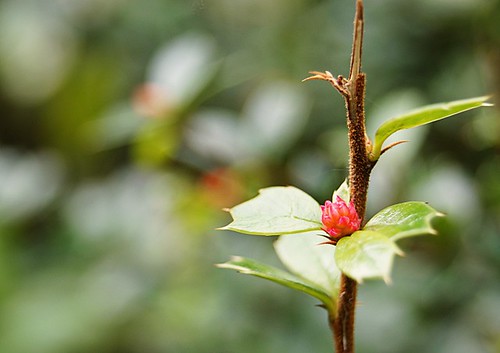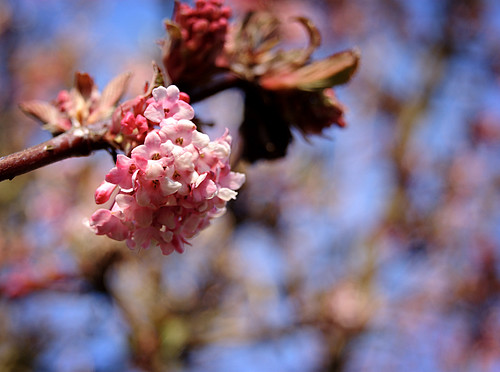When taking any photograph, the first consideration has to be the exposure. The exposure is exactly that: how well the camera's sensor was exposed to the light at the moment the shot was taken. There are three main things to consider when aiming for the right exposure: Aperture, Shutter Speed, and ISO; known collectively as The Exposure Triangle.
Aperture
Aperture was, for me, the more confusing term when I first started out. The aperture setting controls the size of the lens opening to allow more or less light into the camera. If you consider your camera lens to be like the human eye, the aperture would be the size of the pupil. Bigger = more light, smaller = less light.
As well as controlling the amount of light let in, the aperture also controls something called Depth of Field; that is, the area or amount of the shot that is in focus. A narrow depth of field means that only a small area of the shot is sharply in focus:

See how just a small part of the fence is sharp, but the foreground and background are all out of focus? That's what a wide aperture will do to a shot, especially one where your focus is very close.
A smaller aperture limits the amount of light coming into the camera, but also ensure more of the shot is in focus:

Here you can see the sundial in the foreground is just as in-focus as the trees and sky in the background.
Ok so here's where it gets confusing, and why it is this way, I couldn't tell you. To select a larger aperture on your camera, you have to choose a smaller number, and to select a smaller aperture, you choose a higher number.
Narrow depth of field = smaller number = wider aperture.
Wide depth of field = larger number = narrower aperture.
In order for your shot to be correctly exposed, if you limit your aperture you must then slow your shutter speed to allow enough light in to the camera. I'll go over shutter speed in more detail in a later post.
If you select your camera's Auto mode, you will have no control over any of the settings; however all DSLR cameras and even some Point and Shoot models have an Aperture Priority mode. This will allow you to select the aperture size you want, and the camera will then work out the optimum shutter speed to correctly expose the shot. I currently shoot almost exclusively in Aperture Priority mode.
Bokeh
Ahh, bokeh. I've come to realise from my reading that bokeh is a notion that is more pleasing to amateurs, and the more experienced photographers out there don't really consider it that much.
The word "bokeh" (pronounced "bock-eh", not "bow-kay") is a Japanese word and it refers to the part of a photograph that is out of focus. A lot of people, myself included, will compose a shot not just to capture a subject, but also to capture some attractive bokeh in the background. I find it pleasing to the eye; in the professional world I don't know how much weight it carries. To achieve bokeh, one must open up their aperture really wide when photographing a foreground subject; the subject will be in focus, the background out of focus, and this blurry background is the bokeh.

See how the cute little flower is sharp and then there's loads of out-of-focus jazz in the background? That background jazz is bokeh. The best bokeh, in my opinion, is created with a really narrow depth-of-field (the capability for which, my current lens just doesn't have) and contrasting colours or lights in the background. Bokeh itself can be an artistic device, or can be used to highlight the subject of the shot even more.

My next Jargon post will be about shutter speed.
Happy snapping.
xxx

0 comments:
Post a Comment